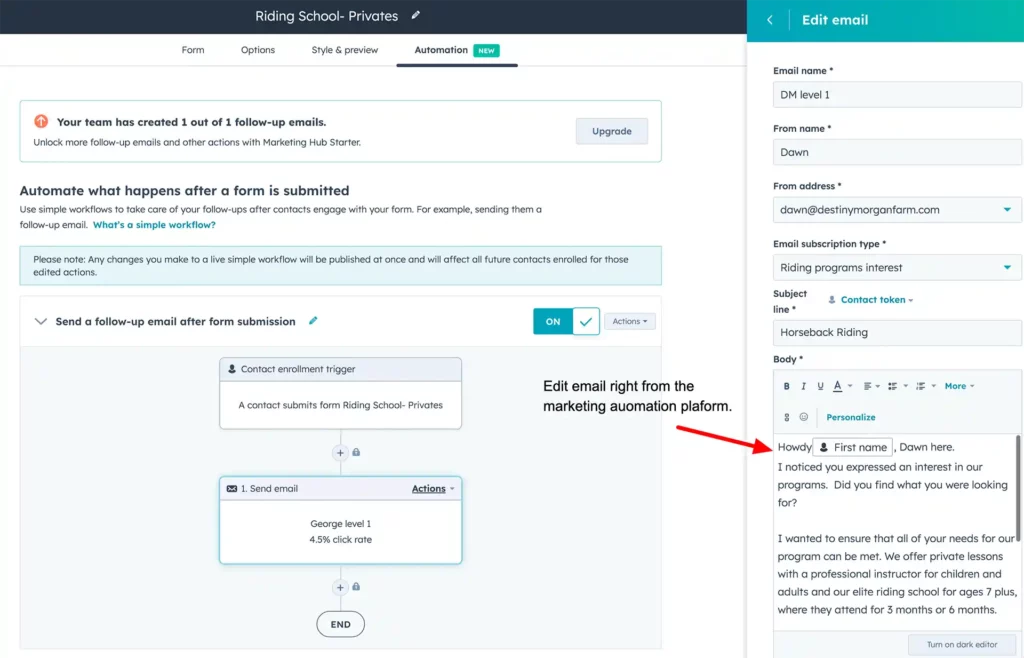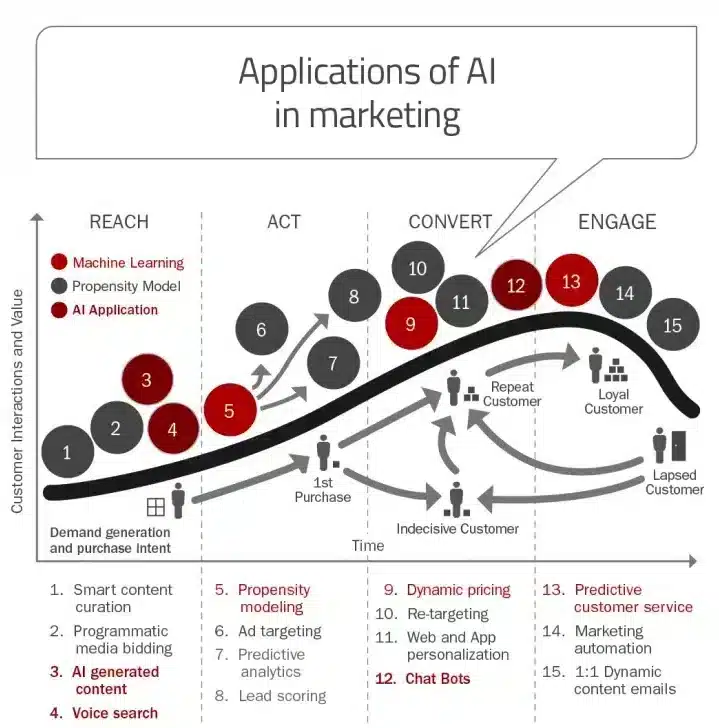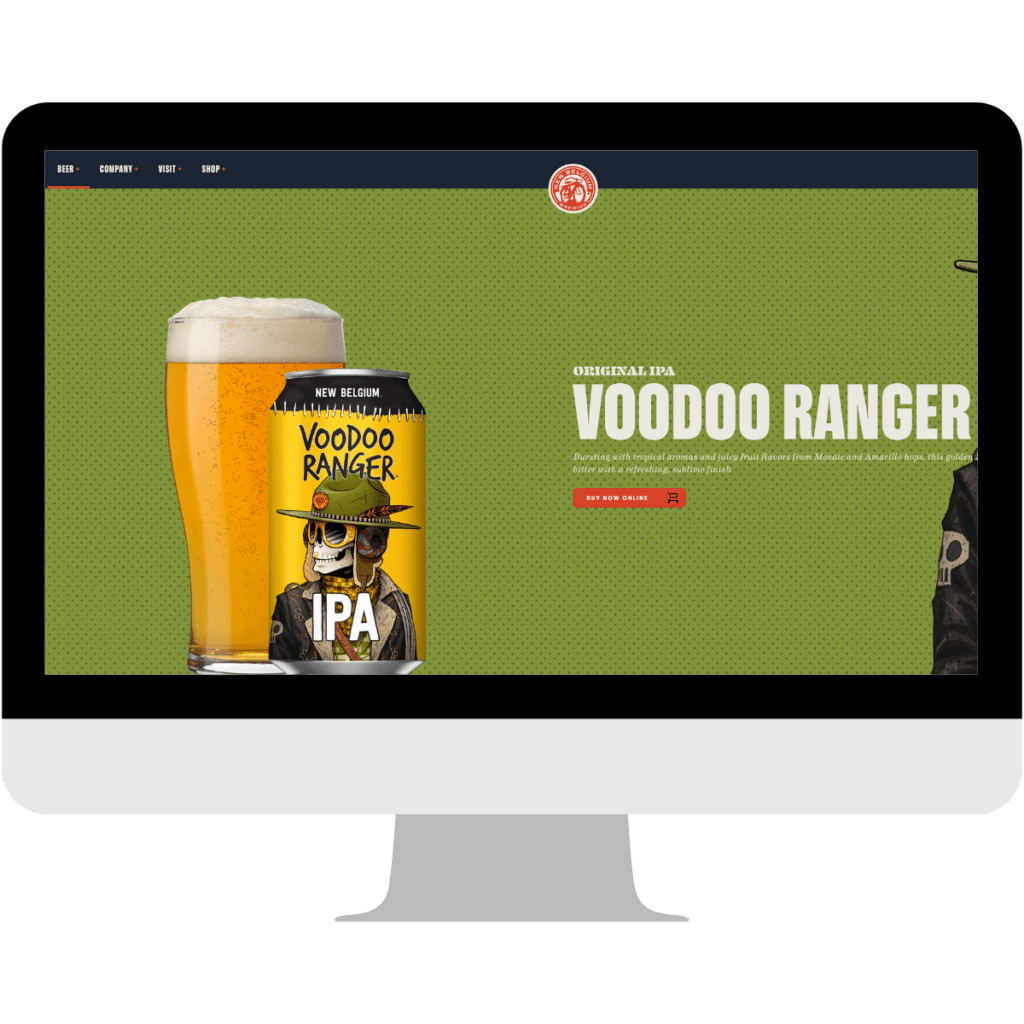Your marketing efforts matter with limited resources.
Marketing efforts that don’t relate to improving your customer experience are wasting your time. In 2023, customer experience became the key brand differentiator. It has even surpassed price and product.
This fact only proves that creating one-size-fits-all marketing strategies no longer resonates with consumers.
To appeal to your customers and stand out, you must provide highly personalized user experiences.
Marketing personalization has multiple benefits. It inspires brand awareness and loyalty, maximizes conversions, and boosts customer experiences.
Here is how to use personalization in your marketing campaigns.
- 90% of customers are willing to spend more when companies provide personalized customer services.
- 61% of customers would leave for a competitor after just one negative experience
- 70% of the buying experience is based on how the customer is treated
- 89% of customers will pay more for certain companies that offer solutions customers can find online
Identify your Customers and Observe their Behaviors

To provide personalized user experiences, you first need to get to know your customers.
Analyze your Customer Base
Pay attention to your typical buyers’ demographic data, such as gender, geolocation, age, job position, family status, etc.
Then, analyze their psychographic data, including their habits, preferences, problems, and fears.
Fortunately, you do not need to collect customer data manually. When managed properly, your CRM software will do that for you.
Use Website Analytics Tools
The next step is tracking customer behaviors online.
Use Google Analytics to understand where your customers come from, which channels they use the most, and what content they like or do not like. Many website analytics, social media analytics, and email analytics tools will help you track your users’ behaviors across different channels.
Consider using reporting software to combine widgets from different digital marketing tools to get comprehensive insights into your customers’ activities. With marketing automation software, you can track all relevant metrics on a single marketing dashboard instead of tracking customer engagement across multiple tools and platforms.
Use Heatmaps
Apart from traditional website analytics tools, you could also use heatmaps, such as HotJar, to understand how visitors interact with your website. These tools will show you the most prominent areas on your site, helping you know where to place your most relevant content.
Collect Customer Feedback
For starters, use social media monitoring tools to track your brand and product mentions and understand what your customers say about your brand.
Next, conduct customer satisfaction surveys. To get honest feedback, you should ask relevant questions, choose the right survey type, align your study with the customers’ phase in a buyer’s journey, and use the proper channels to distribute surveys. You can send surveys via email, website, SMS, app, or any other channel that works for your customers.
Finally, ask for customer reviews and ratings on your website, social networks, business listings, product review sites, etc.
Create Buyer Personas

Based on your collected data, you should create buyer personas and fictional representations of your ideal customer. They help you define your typical customers and clarify who you are addressing.
As mentioned above, a customer avatar should observe your buyers from multiple perspectives. It would be best if you defined them:
- personal life
- careers
- back story
- personalities
- demographics
- shopping behaviors
- finances
- goals
- pain points
Some many online tools and templates will help you display your customer data concisely and create visually appealing customer avatars.
Segment your Email List

Email marketing is still one of the most powerful marketing practices. It engages customers, increases brand awareness, and boosts conversions. However, it would be best if you remembered that your customers’ inboxes are packed to the brim with branded messages. So, what is it that sets you apart in the sea of similar brands?
The answer is simple—relevancy. Since users do not have time to read each email they receive, they will open messages that grab their attention and deliver value to them.
That is why you need to segment your email lists to provide users with personalized content. There are many ways to segment your email list, such as by your users’ geolocation, age, industry, previous purchases, buying frequency, shopping habits, etc.
All you need to do is ask customers about their expectations and preferences. For example, you could ask them what kind of content they want from you, how often they would like to receive your newsletters, and what topics they are interested in.
Many tools, including Constant Contact, SharpSpring, AWeber, Drip, and GetResponse, will help you segment your email lists.

Provide Multiple Communication Channels
Never put all your eggs in one basket when building a customer service strategy. For example, email is one of the most profitable marketing channels, but this does not mean it is your customers’ preferred communication channel.
Your audiences do not want to wait for your email responses for days. Instead, they expect you to communicate with them in real-time across all communication channels they use.
That is why you should build an omnichannel communications strategy.
Let customers decide how they want to subscribe.
Customers are eager to share their data to stay informed about your website content. To take their experiences to the next level, let them choose how they want to be informed about your latest content.
For example, big brands like HubSpot allow customers to subscribe to their blogs via email, Slack, or Facebook Messenger. Rethinking AI Website Design in the Age of the Algorithm
Humanize your call center.
While customers now turn to chatbots for instant feedback, many still appreciate in-person interactions. Almost 60% of consumers say that companies have lost the human element, while 71% of Americans would rather talk to a human than a bot according to PWC.
Precisely because of that, you need to improve the effectiveness of your call center by personalizing it. Many businesses now switch to online phone service providers because they let them build holistic buyer journeys. VoIP providers offer advanced call analytics, customer experience scores, and customer sentiment features, helping you understand how satisfied your customers are.
Above all, VoIP integrates with your CRM platform. This means your customer service representatives will instantly see on-screen popups with the caller’s name, contact, account, purchases, and cases so they can provide personalized customer support.
Use chatbots

Customers will turn to your online support when expecting real-time feedback and fixes from your brand.
That is where chatbots shine. They assist your live chat agents by responding to repetitive customer inquiries. Above all, no matter how many users seek help, they will provide instant feedback. Chatbots can boost your marketing effort quickly.
Apart from providing faster feedback, chatbots are a perfect communication channel because they provide highly targeted user experiences. Many brands use AI bots to ask leads numerous questions about their needs and preferences and recommend the right products.
The eBay chatbot is one of the most advanced AI bots out there. It will browse thousands of products to help you find the ones at the lowest price.
Some bots also allow users to finalize purchases. For example, with the Lyft bot, you can request your ride and get immediate feedback.
Track brand mentions on social networks.
Many big brands use social networks to monitor brand sentiment and track what their customers say about them.
For example, a few years ago, many social media users complained about dozing off in the middle of the show they were binge-watching on Netflix. To boost user experiences and prove that they value customer feedback, Netflix created Netflix Socks that recognize when a user is asleep and send a signal to their TV to pause the show.
You will turn their frustration into brand advocacy by tracking brand sentiment on social networks and responding to customers’ questions. Content Translation Services: A Competitive Advantage for Your Business
Fortunately, you do not need to monitor brand mentions and hashtags manually. Many social listening and brand sentiment analytics tools, including Hootsuite, Social Mention, and SproutSocial, may help you.
Create Dynamic Content to Cater to Customers’ Preferences

How does YouTube show personalized video recommendations? The answer is simple – it tracks your behaviors and clicks to offer content that aligns with your preferences.
That is the idea behind dynamic content – any online content that changes based on user’s data and preferences.
It allows you to provide personalized and consistent user experiences across all channels your customers use.
Personalize In-App Experiences
You aim to understand your customers’ preferences and provide them with the right content within your app.
For example, registering on Netflix will ask you to choose your favorite shows to recommend related content.
Show Relevant Content on Your Website

If you run an online shop, you could track customers’ previous interactions with your website, such as clicks or purchases. Based on this data, you could provide targeted product recommendations.
For example, Amazon has categories like “Customers That Bought This Product Also Bought” or “Related Products” that allow them to upsell and cross-sell faster without harming user experiences. How to Use AI Digital Marketing to Transform Your Marketing Results
Leverage AI and Your Marketing Efforts
AI is taking user experiences to a whole new level. Let’s take the example of online stores. People cannot touch and feel your products, so how can they trust you? That is where AI steps in. For instance, Sephora lets users upload their photos and try out different makeup products before making buying decisions.
Wrap-Up on Marketing Efforts
Any customer-oriented strategy relies on personalization.
Start by identifying your customers. Collect their data, seek feedback, and build buyer personas.
Segment your email base to send highly targeted emails that convert.
Humanize customer interactions by providing multi-channel customer support.
Finally, create dynamic content to engage your audiences and boost their conversions.
I hope these tips will help you.
Any thoughts on using personalization in marketing? We are listening!
General FAQ’s on Marketing Efforts
How do you measure marketing efforts?

Here are some of the common KPIs you should measure for each of your campaigns, regardless of the type, channel, or medium:
1. Return on Investment (ROI)
2. Cost per Win (Sale)
3. Cost per Lead
4. Conversion Rate (or Goal Completion Rate)
5. Incremental Sales
6. Purchase Funnel
7. Customer Lifetime Value
What is managing the marketing effort?

More companies are shifting their brand management focus to customer management. Marketing Control involves evaluating the results of marketing strategies and plans and taking corrective action to ensure that objectives are attained.
What is the result of effective marketing?

Marketing KPIs (Key Performance Indicators) are specific and numerical metrics organizations track to measure their progress toward a defined goal within their marketing channels. By tracking the right marketing KPIs, your company will be able to adjust various strategies and budgets.
What are KPIs in marketing?

Marketing KPIs (Key Performance Indicators) are specific, numerical marketing metrics that organizations track to measure their progress toward a defined goal within their marketing channels. By tracking the right marketing KPIs, your company will be able to make adjustments to various strategies and budgets.

